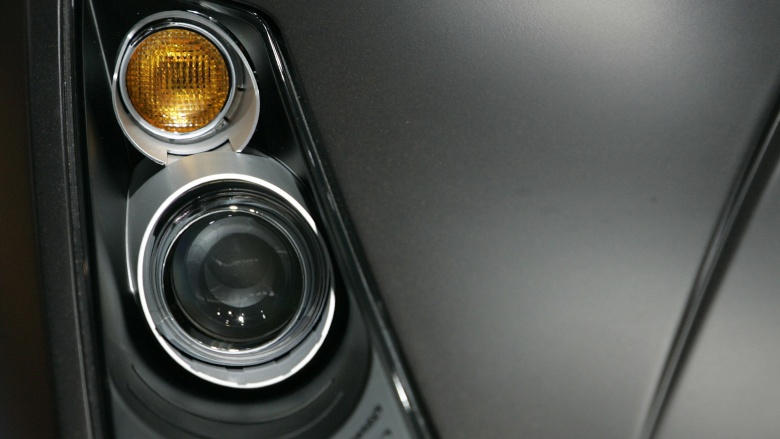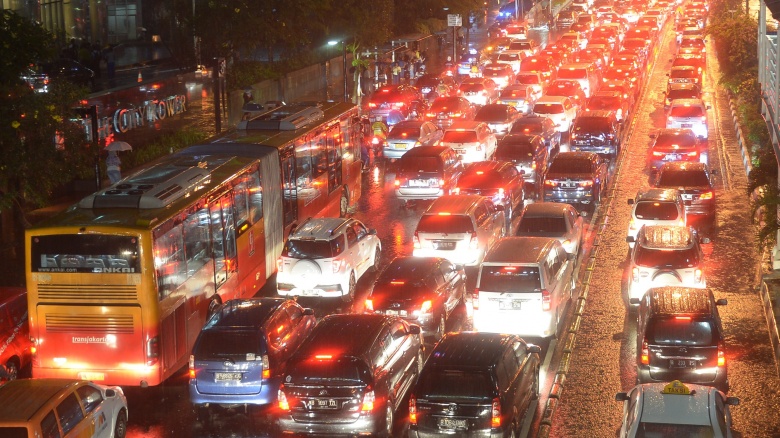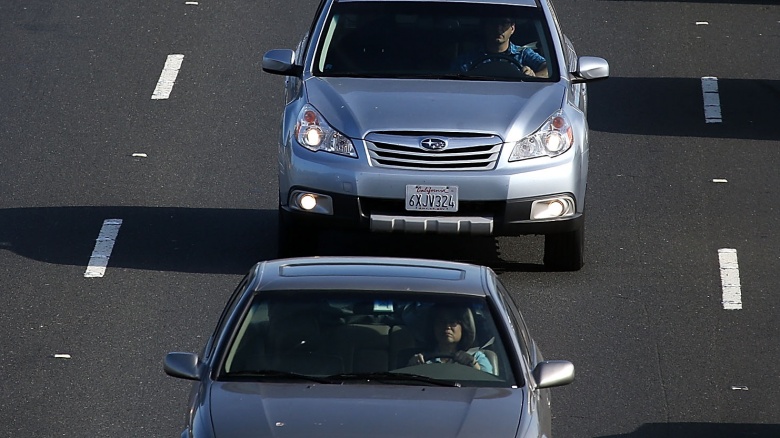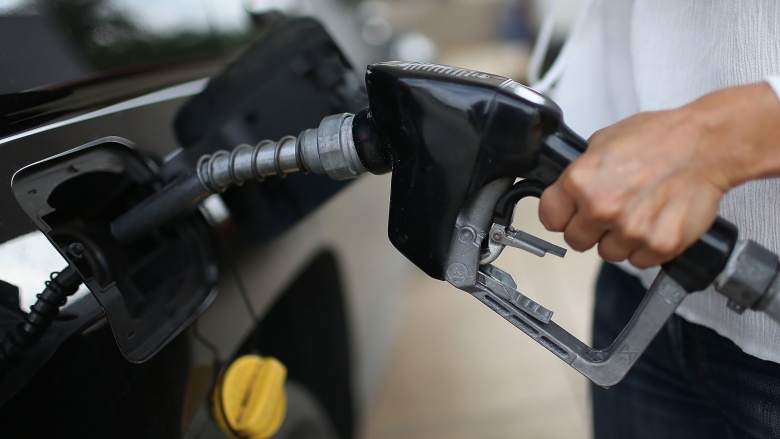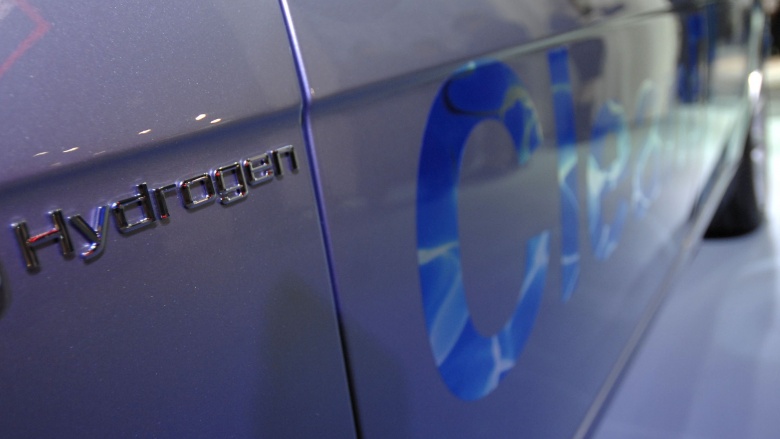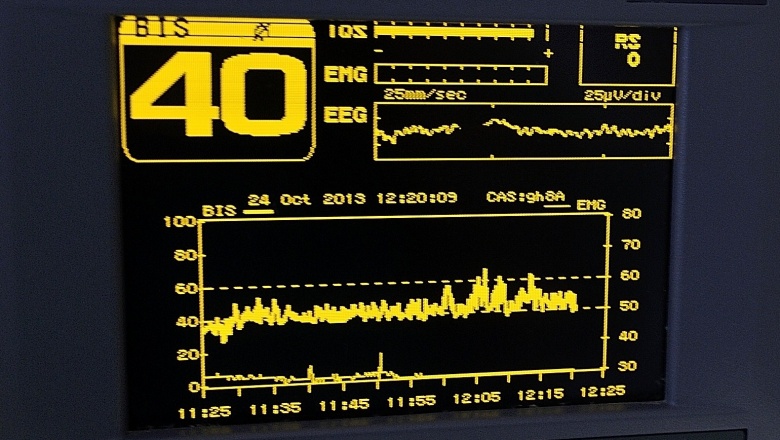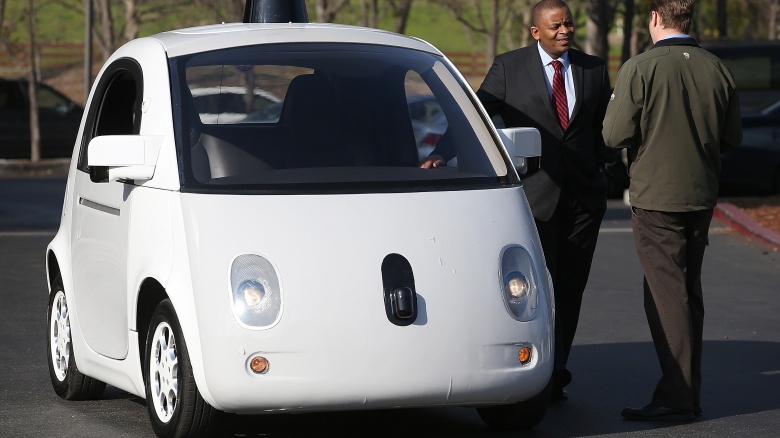Things Your Car Will Be Able To Do In The Future
To those of us still driving cars built in the '90s, a 2016 edition vehicle can seem like something out of Star Trek. Automatic lights and wipers, integrated touchscreens, tire pressure monitors, independent passenger climate control, seat-back entertainment, automatic parking...the list goes on. But look a few years into the future and you will soon realize that what we have now is just new seasoning on the same old steak. Give it a few years and the car you drive now will look like the vehicular equivalent of a flip phone in 2016. And that cheap '90s beater that gets you around today will look like the Bakelite rotary dial phone your grandparents had. So considering today's car's forthcoming obsolescence, what will your auto be able to do in the future?
Gesture control
While the current BMW 7 series allows you to control stereo volume and answer phone calls with a movement of your finger, in the near future you will be able to do a lot more. Integrating movement sensors with a large screen, BMW's "AirTouch" will allow you to interact with car systems with hand gestures as if you were using a touch screen. Although this just sounds like a touch screen you don't have to actually touch, BMW claims it will actually offer advancements over the current tech, such as 3D control inputs and intelligent interfaces that will reduce driver distractions. BMW will be revealing a "vision car" at the 2016 Consumer Electronics Show in Las Vegas in January 2016 that will offer a preview of what the system will look like. But you will have to wait a little longer before you can wave hello to one in your own car.
Hands-free driving
Hands-free driving might not sound like a giant leap—cars are already parking themselves after all. But in the not too distant future, your car will be able to take over a much larger share of the driving. Several manufacturers are developing systems that will allow the vehicle to be aware of its position in the road and automatically provide control inputs. Volkswagen is working on a system that uses cameras to monitor your car's road position. If it detects you drifting across the lane more than normal, it can provide corrections. This is primarily intended as a safety feature in situations where the driver is distracted or dozing off, but the future implications of the technology seem obvious.
Laser headlights
The closest thing to a traditional superpower on this list, laser headlights would provide you with unprecedented vision at night. Audi and BMW are both developing headlights that bounce lasers off mirrors to create a diffused white beam and light the road up to 600 yards ahead. Other advanced headlights using LEDs could allow your car to detect oncoming vehicles and automatically direct the beam away to avoid blinding the other driver, effectively rendering low beams obsolete.
Reduce congestion
A German government-sponsored initiative called "ACTIV" could make it so your car could actually help reduce congestion on highways. One concept proposed by Volkswagen would work like this: when a lane is closed, or cars are merging onto the highway, the cars already on the highway or open lanes automatically speed up to create gaps for other cars to merge into. This has to be timed well, and so will only work when cars are a lot more automated and connected than they are today. As such, this technology is a good few years down the road. But imagine a world where a car accident doesn't automatically add 15 minutes or more to your journey—that world is coming.
Join a convoy
Driving in convoy, or "platooning" as the technique is known, offers a number of advantages over standard driving. But this isn't just a bunch of people driving in a line. Rather, by using a system of radar and WiFi technology, all the cars in the line could rapidly communicate and coordinate speed changes. In this way the cars could drive much closer together and gain significant fuel economies through drag reduction. Another benefit would be a reduction in the accordion effect caused by sudden braking in heavy traffic, and an overall increase in average highway speeds. Depending on the system, most or all of the drivers in the convoy could sit back and enjoy the ride, letting the system control their vehicle. A startup called Peleton Tech has successfully tested a system designed for trucks. In the trial, two trucks used the system and found fuel savings of 4.5 percent for the front truck, and 10 percent for the rear truck. If a system like this were installed in every car on the road right now, your fuel bill for highway driving would drop significantly.
Burn advanced fuels
As your car gets smarter, so must the fuel it burns. No longer will just any old gasoline do in the engines of tomorrow, but instead a new breed of advanced synthetic fuels designed to work in symphony with the engine. Using advanced synthetic fuels would allow companies to produce highly efficient engines and reduce the impact on the environment created by both the production and consumption of fuels. All this will make your car more efficient, quieter, and cleaner—or alternatively faster and louder if that's your thing (but still with reduced emissions).
Burn nothing at all
Hydrogen fuel cell technology has the potential to permanently take the combustion out of the internal combustion engine. By utilizing an electro-chemical reaction similar to a battery, a fuel cell can generate continuous clean energy as long as it has a supply of hydrogen. But unlike a battery, which takes hours to recharge, the fuel cell can be refueled almost as quickly as a regular gas guzzler. Fuel cells have a surprisingly long history, first being invented in 1838. They have also been used by NASA to power satellites. Imagine driving 200 miles, filling up while you use the bathroom, then driving another 200 miles—and the only emission is water...
Talk to other vehicles
As early as 2017, you might start seeing technology on your car that allows it to communicate with the cars around it. Dubbed V2V (vehicle to vehicle), the technology allows cars to track each other and communicate location and movement information. A trial is being run in Ann Arbor, Michigan by the University of Michigan, and the Department of Transportation has 3000 vehicles equipped with prototype devices. Depending on the outcome of the trial you might start seeing V2V sooner than you think, as it can easily be retrofitted to older vehicles.
Monitor your health
Cars may soon be equipped with technology that can monitor your physical condition, from heart rate to blood alcohol content, and much more besides. A system being developed by Ford can monitor a diabetic's blood sugar level and warn if it drops too far. And a system being developed by the University of Leicester, England, uses LEDs to monitor your eye movements and determine if you are paying sufficient attention to the road. Technology being developed by the Nippon Medical school in Japan can even spot the signs of an imminent heart attack. But as usual, the most likely application you will see in the near future is accident avoidance, with your car being able to detect if you are falling asleep and wake you up.
Do without you entirely
Of all the technologies here, driverless cars are the furthest away from commercial release, but ironically it might be the most well-known technology on this list. Thanks to Google and its driverless cars program in California, the media has regularly featured images of cute little vehicles plodding around without a driver. Google made its test vehicles deliberately adorable to help ease public mistrust of autonomous vehicles at this early stage, and if successful the technology has the potential to massively reduce accident rates and congestion. There have even been predictions that driverless cars could spell the end of vehicle ownership all together, allowing an Uber-style travel experience through a fleet of cooperatively owned driverless vehicles. The technology is pretty well advanced now, and although it faces some serious social and legislative hurdles before you can sit back and relax on the way to work, it's definitely coming.



